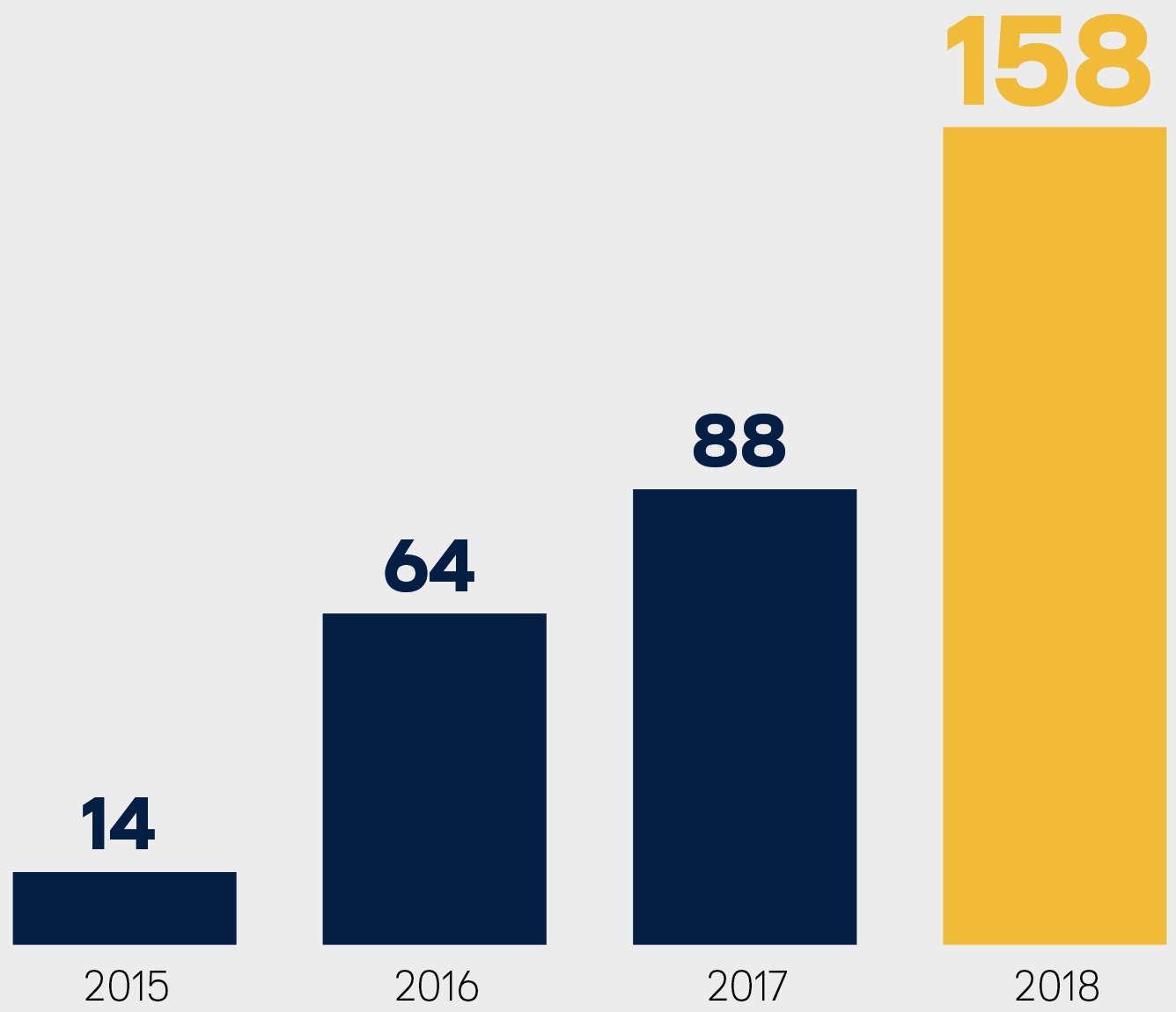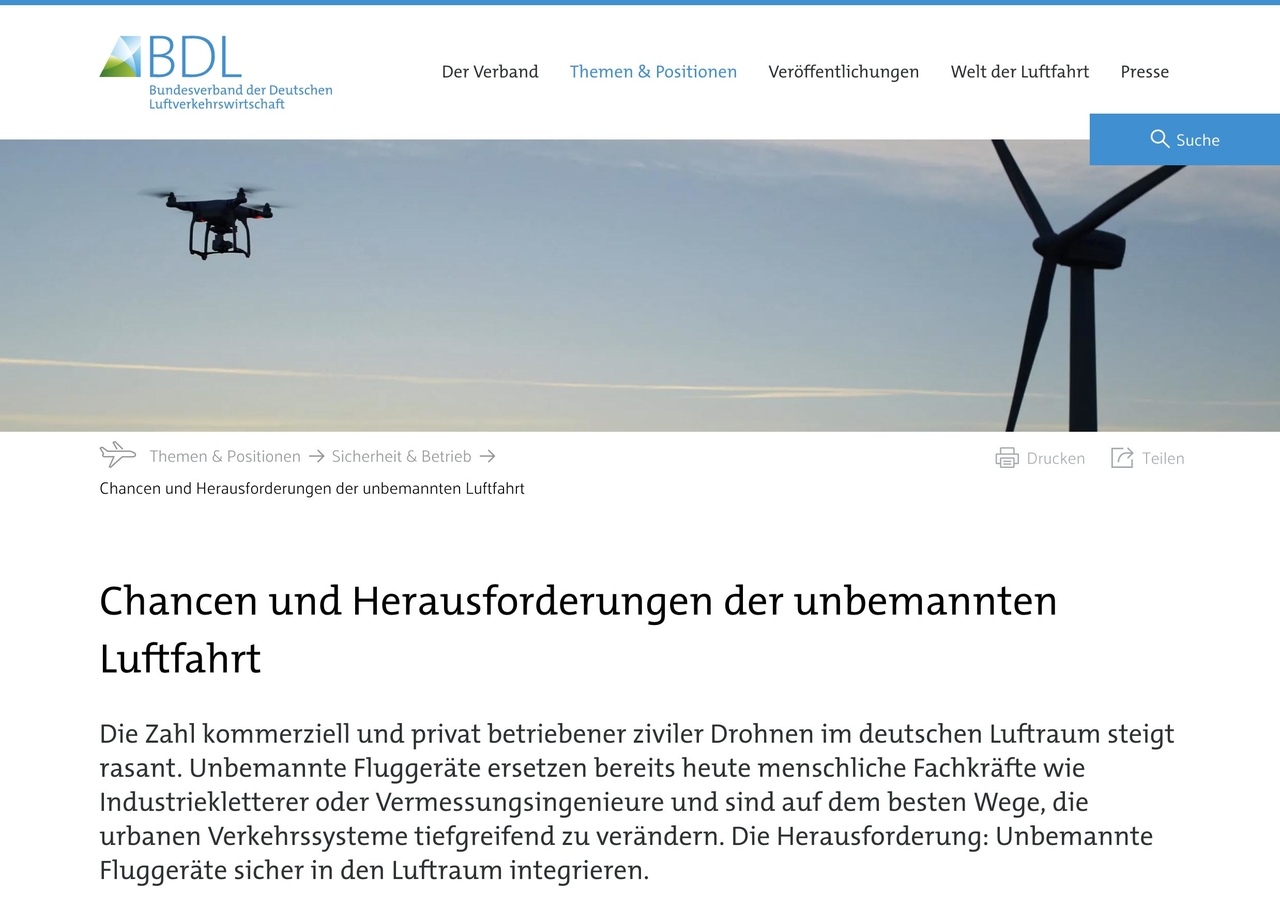Safety of air transport is the number one priority
The clear view of the air transport sector is always: safety first! London Gatwick Airport was closed for more than 36 hours in December 2018 because a drone was hindering both take-off and landing operations. 140,000 passengers were affected. Cases such as these make it all the more important that we are able to react efficiently when necessary.
From the point of view of the Lufthansa Group, government policy in this area needs to address the following aspects:
- Equipping drones with transponders: All drones should be registered and fitted with electric transponders. If the DFS (German Air Traffic Control) detects such a device in the area surrounding an airport, they will be able to quickly identify the owner and get in touch with them. Disruptions in the area surrounding airports are not as a rule caused intentionally.
- Organization of a state-run drone defense system: If a drone pilot is not cooperative and is disrupting air transport intentionally, then it is the task of the state to ensure safety. For this purpose, the police should be equipped with the relevant mobile technology to be able to identify the drones and react with appropriate defense measures. The financial burden involved could be reduced through international cooperation agreements.
- Coordination of national and state-wide activities: Within the airport area, the German federal police force is responsible for safety. Beyond the boundaries of the airport, this is matter for the police force of the federal state in question. This division of tasks is not practicable when it comes to defense against drones as the device may move between the two different locations. The German federal police force needs to be given far-reaching powers in the area of drone defense.
- Development of response plans: All potential scenarios for a threat will have to be worked through. The authorities need to coordinate with the industry to develop appropriate crisis response plans – something that is done as a matter of course in air transport – and will need to organize for exercises to be carried out.
The air transport sector is ready and willing to work with the authorities to develop practice-oriented solutions. The goal: maximizing safety for passengers and an environment in which drone technology – which holds a great deal of promise – can continue to develop in Germany.

